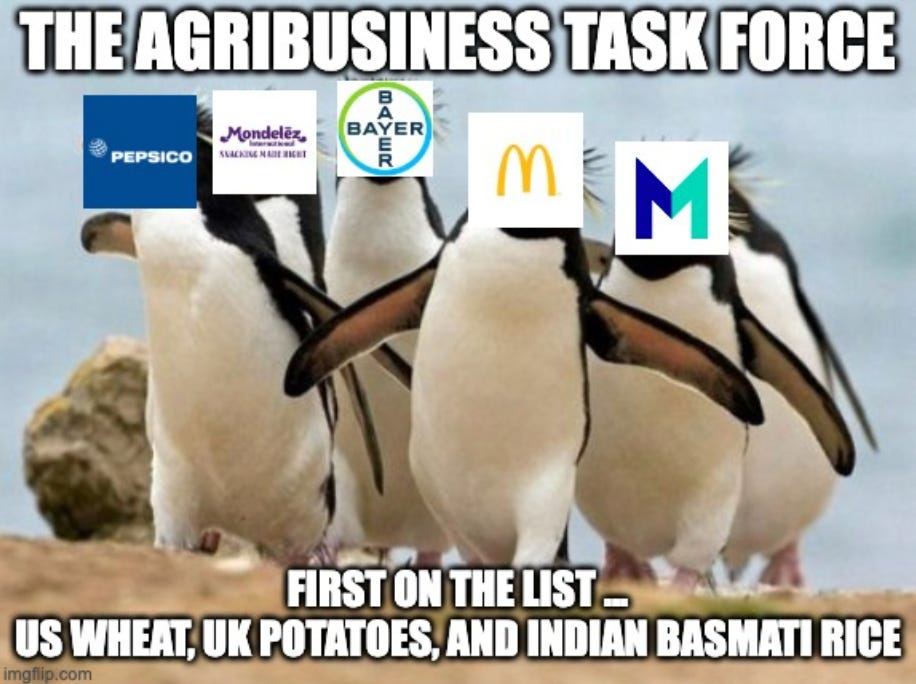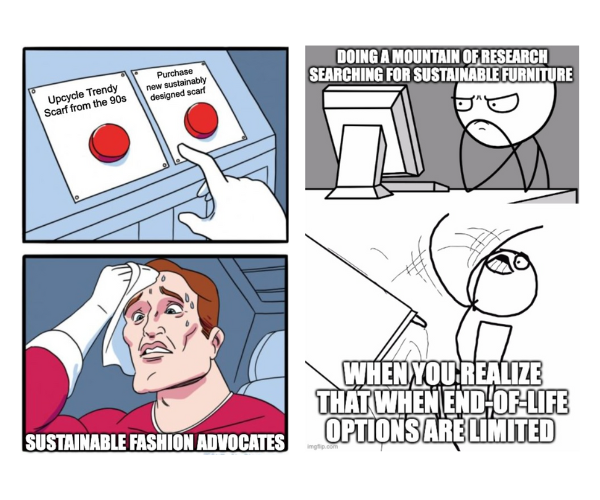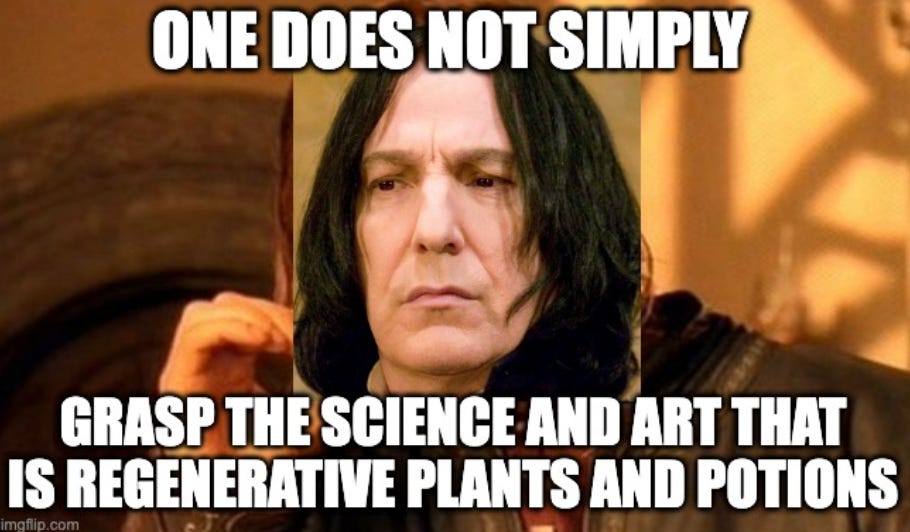Who Determines What Is Regenerative?
At its core, regenerative practices represent a fundamental shift in the way we relate to the natural world.
For those of you word masters, advocating for sustainable practices, here is one to consider.
Regenerative has been another slightly amorphous word that continues along a line of climate and sustainability buzzwords that seem to gain traction only to be squashed by scrutiny overnight. What exactly are we regenerating and for whom? Are we regenerating for a status quo that has catalyzed multiple global crises?
At its core, regenerative practices represent a fundamental shift in the way we relate to the natural world. This apply to agriculture and land management practices, but also applies to industries that heavily rely on biodiverse ecosystems like medicine, fashion, and furniture.
Who gets to define “regenerative” gets a little more complex. While some advocates argue that the term should only be used to describe practices that meet a specific set of criteria, such as those laid out by the Regenerative Agriculture Initiative. Others use the term more broadly to encompass any practices that prioritize soil health and ecosystem services, even if they do not meet a specific set of criteria. Some critics argue that the term is too vague and can be used to yet again, greenwash conventional practices.
So let’s break down ReGen!
Regenerative Agriculture
Via a quick LinkedIn #regenag search, I would summary regenerative agriculture as …
“Regenerative agriculture enables farmers and ranchers to sequester enormous amounts of carbon in the soil — and at a profit. If farmers around the world adopt the practice, it will start to roll climate change backward. It enhances nature biodiversity and cuts down costs by optimizing water use that is critical for carbon-rich soil. It also improves worker safety and investment in local businesses on already stressed farming communities. The five common principles to consider include minimizing soil disruption, keeping soil covered with plants, planting diverse crops, no synthetic chemicals, and planned grazing.
Sounds amazing right?! So - where do we run into issues of greenwashing or scrutinizing how regenerative practices are being conducted? Look no further than the top names in the Agribusiness Industry.
I think having more commitments to Accelerating Regenerative Agriculture is the first step in accessing and developing scalable value chains. We’ve seen a very similar approach across a number of different organizations over the last 6 years committing to Climate Pledges. The goal here is to create a global food system that is more resilient, sustainable, and equitable, which will vary across regions. For example, In North America, the United States Department of Agriculture (USDA) reports that as of 2019, approximately 98% of all farms in the U.S. are family-owned, with 87% being owned by individuals or families, and the remaining 11% being owned by family-held corporations or partnerships. While in South American, the percentage of land owned by large agribusiness corporations is currently increasing across soybean and cattle production. This beckons the question — is there a way to quantify and verify results for truly regenerative practices?
In which case, what new set of regenerative agriculture practices and technologies should we prioritize? I’m going to say it again, every region is going to have a unique approach to regenerative agriculture as land practices and management greatly varies. Via a quick search on recent funding, we see trends across the following product solutions
Soil Health - the foundation of regenerative agriculture. Improving practices can help to improve crop yields, reduce erosion, and increase water retention. Products in this space include soil amendments, like compost and biochar, as well as microbial inoculants and biostimulants. Recent funding win startups like Regrow Ag (Series B USD $38M) and Indigo (Series F USD $360M) suggest a future that increases availability of data to help farmers optimize their soil practices, overall supporting new verticals such as the following.
Composting - products range from small-scale home composting systems to large-scale industrial composting facilities.
No Till Farming - a method of growing crops without disturbing the soil through tillage. This can help to reduce erosion, retain soil moisture, and improve soil health. Products in this space include no-till planters and drills, cover crop seeders, and other equipment designed for use in no-till systems.
Cover Crops - are grown in between cash crop seasons to help improve soil health, reduce erosion, and suppress weeds. Products in this space include cover crop seed mixes and equipment for planting and terminating cover crops.
Lab Based BioTech - companies here are developing new ways to improve plant health and productivity through genetic engineering, gene editing, and other techniques. These companies are working on developing crops that are resistant to pests, tolerant to drought, and have improved nutrient profiles. Companies in this space are a little more mature offering a breadth of commercial applications such as vaccines, plant-based meats, materials for fashion and furniture, and crops that are less dependent on fertilizers.
AgTech Software and Analytics - startups developing tools to help farmers make data-driven decisions about crop management. These tools include precision agriculture software, remote sensing technology, and farm management software. The goal is to help farmers optimize inputs and increase yields while minimizing waste and environmental impact. A few names that stood out during my research include Perennial (Series A USD 18M), Taranis (Series D USD 40M), Fieldin (Series B USD 30M), and Arable (Series C USD 40M) whose recent fundings are attracting VCs bullish on SaaS platforms redefine tech in “farm to table”.
According to the Intergovernmental Panel on Climate Change (IPCC) 2019 Technical Summary on Climate Change and Land, reducing emission from food production is one of the greatest challenges in sustainability as it is responsibility for approximately 23% of global GHG emissions. The largest opportunities for change include carbon removal practices, reducing food and agriculture waste, and shifting to plant based diets. Needless to say, food security is a must in equitable solutions and will be no easy task to accomplish, but I believe that pathways offer new technical solutions an opportunity to improve livelihoods and support changes in demand management.
Largest impacts to value of transitional commodities include — weather events, government policies, and technology advancements
Sustainable Fashion and Furniture
Another area that is taking the regenerative movement to heart is fashion and furniture. These two areas are aiming to reduce the environmental impact of product and consumptions. The approach involves using materials and processes that are sustainable, biodegradable, and circular, emphasizing practices such as recycling, up-cycling, and natural dyeing to reduce waste and pollution. The trend recently has been led by companies like Allbirds and Sabai (just picked these two because I own a set of Allbird shoes and a Sabai sectional) who are committed to utilizing recycled and up-cycled natural fabrics, producing products ethically, and prioritizing regenerative materials. In a nutshell we need to further the use, reuse, and compostability of the following materials:
Organic cotton - grown without harmful pesticides and chemicals, it uses less water and is biodegradable
Hemp - a highly sustainable crop that requires less water and fertilizers than cotton, and is also biodegradable
Bamboo - a fast-growing grass that can be made into textiles, it is renewable and requires less water than cotton
Tencel - made from renewable wood pulp, it is produced in a closed-loop system that minimizes waste and pollution
Cork - harvested from the bark of cork oak trees, it is renewable, recyclable, and biodegradable
Wool - a natural and renewable fiber that is biodegradable and can be recycled
Linen - made from the fibers of the flax plant, it is durable, biodegradable, and requires less water and pesticides than cotton
Piñatex - made from the fibers of pineapple leaves, it is renewable, biodegradable, and requires no extra water or land to produce
Mycelium leather - made from mushroom roots, it is biodegradable, renewable, and can be produced without harming animals
Recycled materials - using recycled materials like plastic bottles or discarded textiles reduces waste and conserves resources.
Cool right?! image sourcing what we wear and lounge as truly sustainable! Personally that is the hook that attracts me to purchasing another product, but have to comment on that being regenerative has equally to do with the end-of-life of products as it does with the sourcing and production of those same products. This topic will need it’s own post in the near future, but in short - circularity and closed loop systems are becoming increasingly popular in product design beginning with sourcing of regenerative materials.
This trend will have major impact in our near future, creating dare I say it — a “Regenerative Product Economy” that creates products that are durable, repairable, and recyclable, while reducing waste, conserving resources, and mitigating environmental impacts associated with product and disposal of products.
But for now, this meme will represent my personal experience with sustainable fashion and furniture.
Largest impacts to value of transitional commodities include — consumer trends, labor issues, material costs, material availability, shipping costs, and consumer preferences.
Regenerative Medicine
Continuing the lab-based biotech trend, I thought medicines where also an interesting area to consider. For starters, organic and biodiverse medicines from the earth have been traced back to the beginnings of human history. Using natural substances for medicinal purposes are common to treat conditions such as cold, coughs, fevers, digestive issues, and chronic pain. Today, there is growing interest in sustainable and regenerative practices in herbal medicine, including the cultivation of medicinal plants and the protection of biodiversity. Trends include:
Use of remedies for health issues including stress, anxiety, sleep disorders, pain, and other mental health disorders.
Use of plant-based ingredients in skincare and beauty products.
Future of pain medicine moving interventional pain practices away from traditional medicine that are destructive. Think reducing reliance on medication or surgery for treatment.
And, medicine that is aimed to restore the structure and function of damaged or diseased tissues and organs.
Regardless of the application, one thing to keep in mind about regenerative medicines is we all must proceed with real caution and real care. These practices and applications have been around for centuries dropping out of mainstream uses and now have a real opportunity to impact industries that have made us sick over the last few decades. There is a need for responsible regulation to ensure that products are safe for use and education to ensure consumers are well-informed about the potential risks and benefits. As we explore the potential of regenerative medicines, it is crucial to do so in a way that is respectful to the traditions and communities from which they originated and to ensure that they are used in a way that is both sustainable and beneficial for all involved.
Largest impacts to value of transitional commodities include — FDA approvals, clinical trial results, and patent expirations.
Final Thoughts
At its core, regenerative practices represent a fundamental shift in the way we relate to the natural world. Each of these themes represent a movement to keep ecosystems diverse and thriving. I would define regenerative as a practice that encourages to think before you do, paying attention to the value of what is already present.
If you’re building or know someone within the regenerative agriculture, sustainable fashion and furniture, or regenerative medicine space, let me know. I would love to chat. Healthy debate is always welcomed to ensure that we are on the right track.




